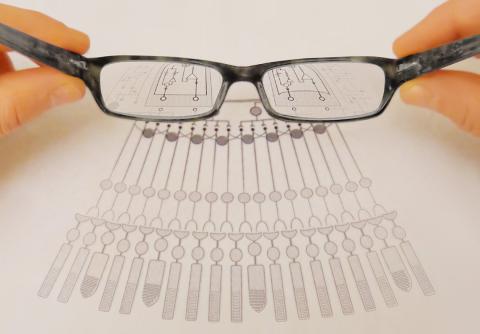Eye Cells May Use Math to Detect Motion

Photo: Diamond Lab, NINDS
Our eyes constantly send bits of information about the world around us to our brains where the information is assembled into objects we recognize. Along the way, a series of neurons in the eye uses electrical and chemical signals to relay the information.
In a study of mice, NIH scientists showed how one type of neuron may do this to distinguish moving objects. The study suggests that the NMDA receptor, a protein normally associated with learning and memory, may help neurons in the eye and the brain relay that information.
“The eye is a window onto the outside world and the inner workings of the brain,” said Dr. Jeffrey Diamond, NINDS senior scientist and senior author of the study published in Neuron. “Our results show how neurons in the eye and the brain may use NMDA receptors to help them detect motion in a complex visual world.”
Vision begins when light enters the eye and hits the retina, which lines the back of the eyeball. Neurons in the retina convert light into nerve signals that are then sent to the brain.
Using retinas isolated from mice, Dr. Alon Poleg-Polsky, a postdoctoral fellow in Diamond’s lab, studied neurons called directionally selective retinal ganglion cells (DSGCs), which are known to fire and send signals to the brain in response to objects moving in specific directions across the eye.
Electrical recordings showed that some of these cells fired when a bar of light passed across the retina from left to right, whereas others responded to light crossing in the opposite direction. Previous studies suggested these unique responses are controlled by incoming signals sent from neighboring cells at chemical communication points called synapses.
In this study, Poleg-Polsky discovered that the activity of NMDA receptors at one set of synapses may regulate whether DSGCs sent direction-sensitive information to the brain.
“Cells in the eye can multiply,” said Poleg-Polsky. “The process may help these cells determine whether a tiger is sauntering by, or fast approaching as it’s looking for dinner.”
